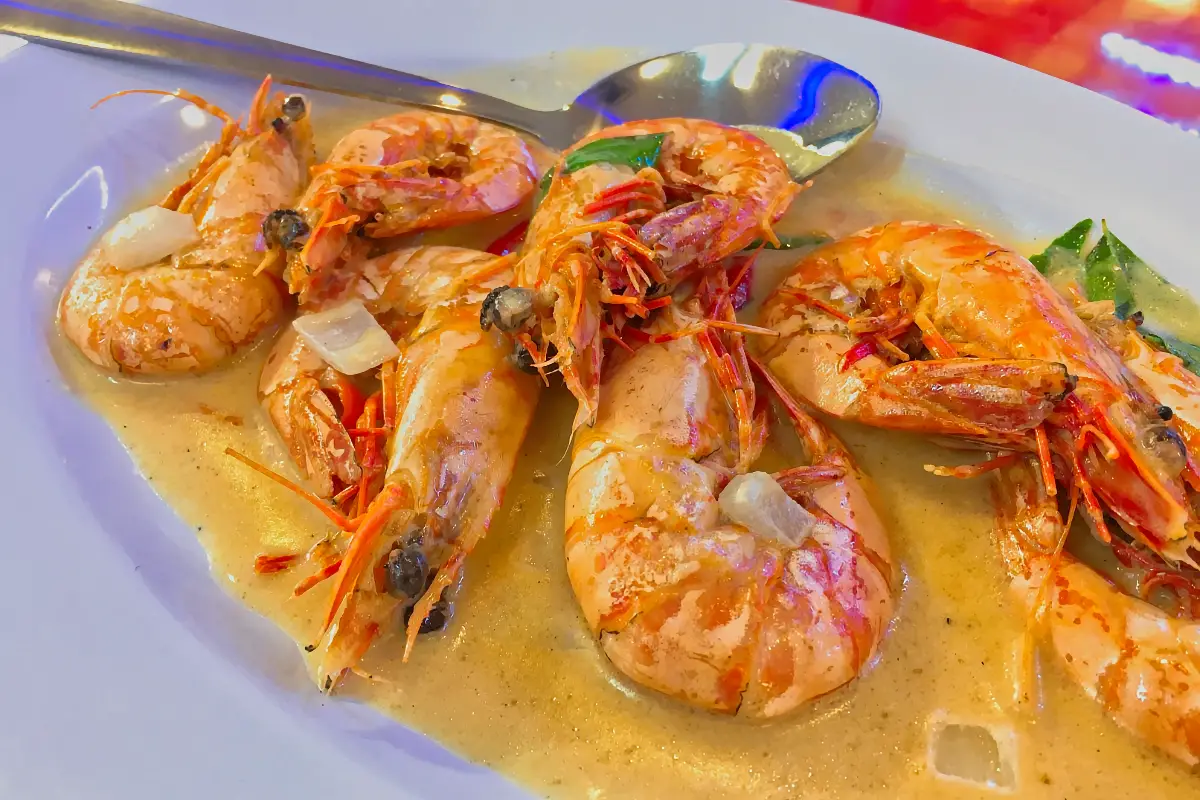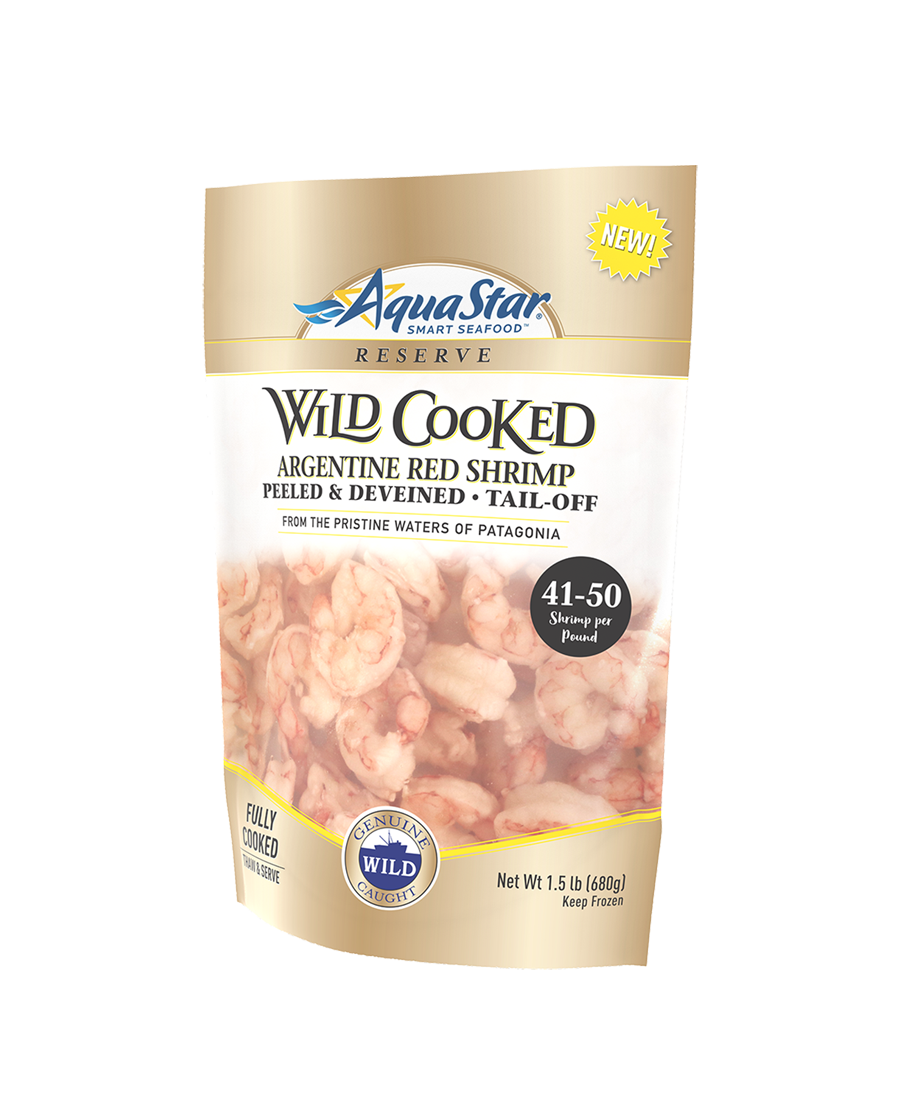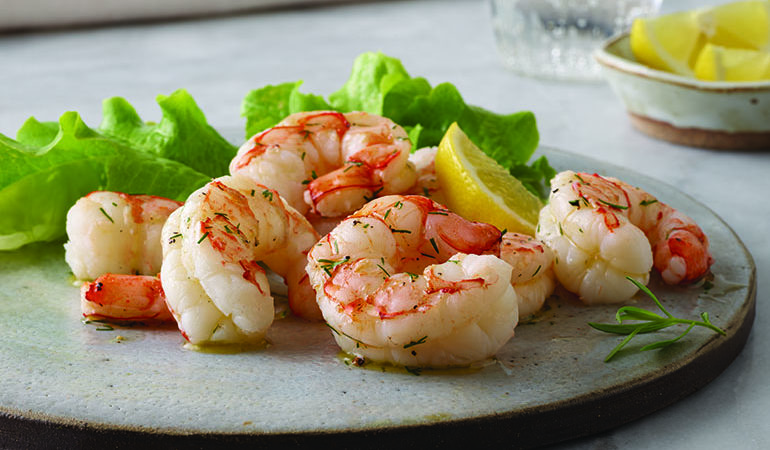Argentinian red shrimp, with their vibrant hue and sweet, delicate flavor, can be a tempting treat to enjoy raw. However, there are important safety considerations when consuming any raw seafood. In this complete guide, we’ll cover everything you need to know about eating Argentinian red shrimp raw.
Overview of Argentinian Red Shrimp
The cold, deep water off the coast of Argentina is home to Argentinian red shrimp, which are also known as langostino. People want these wild-caught shrimp because they have big, bright red shells and tails and taste very sweet.
Unlike regular farmed shrimp, Argentinian reds achieve their reddish-pink color solely from their natural diet of krill and plankton. Their cold water environment also lends to their sweeter flavor and firmer texture when cooked.
When raw, these plump shrimp have a translucent, greyish flesh Once cooked, they turn a deep pinkish-red color and develop a tender bite closer to lobster or crab than traditional shrimp. Their minimal processing and quick cooking time helps them retain their naturally sweet essence.
Is It Safe to Eat Raw?
While some cultures do enjoy raw shrimp health agencies advise against consuming raw Argentinian red shrimp due to potential foodborne illness risks.
Like all raw seafood, Argentinian reds may contain harmful bacteria, viruses, or parasites. These can cause debilitating illnesses such as:
- Vibriosis
- Salmonella
- Norovirus
- Hepatitis A
- Parasitic infections
Consuming raw or undercooked shrimp puts you especially at risk for Vibrio bacteria exposure.
Pregnant women, elderly individuals, and those with a compromised immune system are most susceptible to foodborne illnesses from raw shrimp.
To eliminate risks, it’s recommended to cook Argentinian red shrimp thoroughly until they reach an internal temperature of 145°F. Proper cooking destroys any dangerous pathogens.
Benefits of Raw Consumption
While raw consumption comes with risks, some benefits are associated with eating shrimp raw.
Raw shrimp contain certain enzymes and nutrients that may be diminished through the cooking process. This includes:
- Astaxanthin: A potent antioxidant
- Vitamin B12: Supports nerve and blood health
- Selenium: Boosts immune function
The high protein and abundance of omega-3s in raw shrimp can also help promote satiety.
However, any potential benefits must be weighed carefully against the likelihood of foodborne illness. Pregnant women and those with compromised immune systems should avoid raw shrimp altogether.
Properly Handling Raw Shrimp
If preparing raw shrimp, strict food safety guidelines should be followed to reduce risks.
-
Purchase raw shrimp that are firmly frozen or fresh-caught. Avoid thawed shrimp.
-
Look for shiny, firm shrimp without any discoloration or odor. Discard any that smell unpleasant.
-
Keep raw shrimp chilled below 40°F until ready to use. Do not allow them to sit at room temperature.
-
Thoroughly wash hands, prep spaces, and tools before and after handling raw shrimp. Avoid cross-contamination.
-
Use shrimp immediately after thawing or preparing. Do not keep raw shrimp longer than 2 days refrigerated.
Again, properly cooking shrimp is the only way to fully destroy harmful bacteria. Even with careful handling, risks are associated with consuming raw shrimp.
Preparing Raw Argentinian Red Shrimp
If preparing raw Argentinian red shrimp despite the risks, follow these steps for safety:
-
Thaw frozen shrimp overnight in the fridge or under cold running water. Do not thaw at room temperature.
-
Peel shells and devein shrimp, removing the digestive tract. Rinse well.
-
Pat dry with paper towels to remove excess moisture.
-
Use a sharp knife to slice shrimp lengthwise through the back to butterfly.
-
Place in an airtight container and marinate as desired, for no more than 24 hours.
-
Discard any leftover shrimp after serving. Do not store and reuse.
Keep shrimp chilled at all times during prep and serving. Again, pregnant women, children, elderly, and immunocompromised individuals should avoid consuming raw shrimp.
Cooking Methods for Argentinian Red Shrimp
To safely enjoy Argentinian red shrimp and their sweet flavor, thorough cooking is a must. Here are some popular preparation methods:
Grilling
The high, direct heat of the grill nicely chars the shells while cooking the shrimp flesh quickly. Grill for 2-3 minutes per side until opaque.
Sauteing
A quick saute in a pan with butter, olive oil, or garlic nicely browns the shrimp while cooking through. Saute over medium-high heat for 1-2 minutes per side.
Broiling
For a fast and hands-off approach, broil Argentinian reds 6 inches from heat for 4-5 minutes, flipping halfway through.
Baking
Baked Argentinian red shrimp stay tender and juicy. Bake at 400°F for 4-6 minutes until opaque and pink.
No matter which cooking technique you use, ensure shrimp reach an internal temperature of 145°F as measured by a food thermometer. This kills any potential bacteria.
Delicious Argentinian Red Shrimp Recipe Ideas
Once cooked, Argentinian red shrimp make for an impressive and crowd-pleasing meal. Here are some recipe ideas to try:
-
Shrimp tacos – Dress cooked shrimp in lime, chili powder, cilantro, and diced onions for vibrant shrimp tacos.
-
Shrimp salad – Toss cooked, chilled shrimp with mixed greens, cherry tomatoes, avocado, and a tangy dressing for a light summer salad.
-
Shrimp skewers – Thread shrimp onto skewers with pineapple and bell pepper chunks for a fun grilled appetizer.
-
Shrimp risotto – Saute shrimp with shallots and garlic, then simmer in creamy arborio rice for a rich main dish.
-
Shrimp pasta – For an easy weeknight meal, boil shrimp briefly until pink, then toss with linguine, olive oil, tomatoes, and basil.
-
Shrimp pizza – Top baked pizza crust with tomato sauce, mozzarella, and Argentinian reds for a unique pie.
The possibilities are endless for how to serve up flavorful, fully cooked Argentinian red shrimp!
Storing Leftover Cooked Shrimp
For cooked leftovers, follow these storage tips:
-
Let shrimp cool completely before refrigerating.
-
Store in an airtight container for up to 3 days.
-
Freeze for longer storage, up to 3 months. Thaw in fridge before using.
-
Reheat gently on the stove, in the microwave, or in a 300°F oven until warmed through.
Again, discard any leftovers sitting longer than 3-4 days. Do not take chances with possible bacterial growth.
The Verdict: Raw vs. Cooked
While some cultures do consume raw shrimp, health agencies strongly advise fully cooking Argentinian red shrimp before eating. The risks of foodborne illness are simply too high to justify any potential benefits of raw consumption.
In their cooked form, Argentinian reds still offer a sweet flavor, tender texture, and ample nutrition. Simple preparations like grilling, sautéing, or baking allow their exquisite taste to shine.
Aim to cook shrimp until they are pink and opaque and reach the safe internal temperature of 145°F. This eliminates risks while still providing plenty of flavor and enjoyment.
So for your next shrimp dinner, skip the risks of raw and instead opt for safely cooked Argentinian red shrimp. Follow the recommendations here for handling, prep, and cooking to both minimize foodborne illnesses and maximize flavors.
Enjoy Delicious Argentinian Reds Safely
Argentinian red shrimp offer a sweetness and flair unlike any other shrimp. While the vibrant color may tempt some to try them raw, food safety must come first.
To fully enjoy their natural sweetness free of worries, cook Argentinian reds thoroughly until they reach 145°F internally. Then incorporate them into tacos, salads, pasta dishes, and more for mouthwatering results.
With proper handling and cooking, Argentinian red shrimp are a true delicacy from the sea. Just be sure to steer clear of raw consumption and savor their flavor the safe way.

Cooking & preparation instructions
Thawing: Place bag on a leak proof dish and thaw in refrigerator overnight. Remove shrimp from packaging and drain for 2 – 3 minutes before serving. Quick Thaw: Remove shrimp from packaging and place in a sealed plastic bag. Submerge bag in cold water until thawed.
Our shrimp are cooked and taste great with pasta, rice, soup, salad, or just your favorite dipping sauce.
PEELED, TAIL-OFF Our ready to eat, cooked Argentine Shrimp are wild caught off the coast of Patagonia, in southern Argentina, in the icy cold pristine waters of the Atlantic Ocean. The Patagonia region is one of the most beautiful areas in the world, with a rugged landscape and clean mountain air. The pure waters and nutrient rich ecosystem result in the shrimp’s bright red color, sweet flavor and tender texture. Premium seafood at its finest.


Wild Argentine Red Shrimp Taste & Texture
FAQ
Can you eat Argentine red shrimp raw?
Which shrimp can you eat raw?
Are Argentinian shrimp pink when raw?
How do you know when Argentinian shrimp are cooked?
Are Argentine red shrimp healthy?
Additionally, the high protein content in Argentine red shrimp can aid in muscle growth and repair, making them an excellent choice for those looking to maintain a healthy, balanced diet. 1. How do you cook Argentine red shrimp? Argentine red shrimp can be cooked in a variety of ways, including grilling, sautéing, and boiling.
Can I eat raw shrimp?
Eating raw shrimp is not recommended. Raw shrimp can contain bacteria that can cause food poisoning. It is also a good source of purines, which can trigger gout attacks. If you want to eat shrimp, cook it thoroughly to reduce the risk of food poisoning and to help prevent gout attacks. Cook shrimp until it is opaque and pink to ensure that it is safe to eat.
Can you cook raw Argentine red shrimp?
It is generally recommended to peel the shells off before cooking raw Argentine red shrimp. However, you can leave the shells on if you prefer a more robust flavor and plan to cook them in a dish like a seafood boil or a paella. What cooking methods work best for raw Argentine red shrimp?
What is raw Argentine red shrimp?
Raw Argentine Red Shrimp possess a distinctive vibrant red color that adds a visually stunning appeal to any dish. These shrimp are not only visually appealing but are also renowned for their exceptional taste and tender texture. Getting ready to cook these flavorful crustaceans involves a few important steps.
